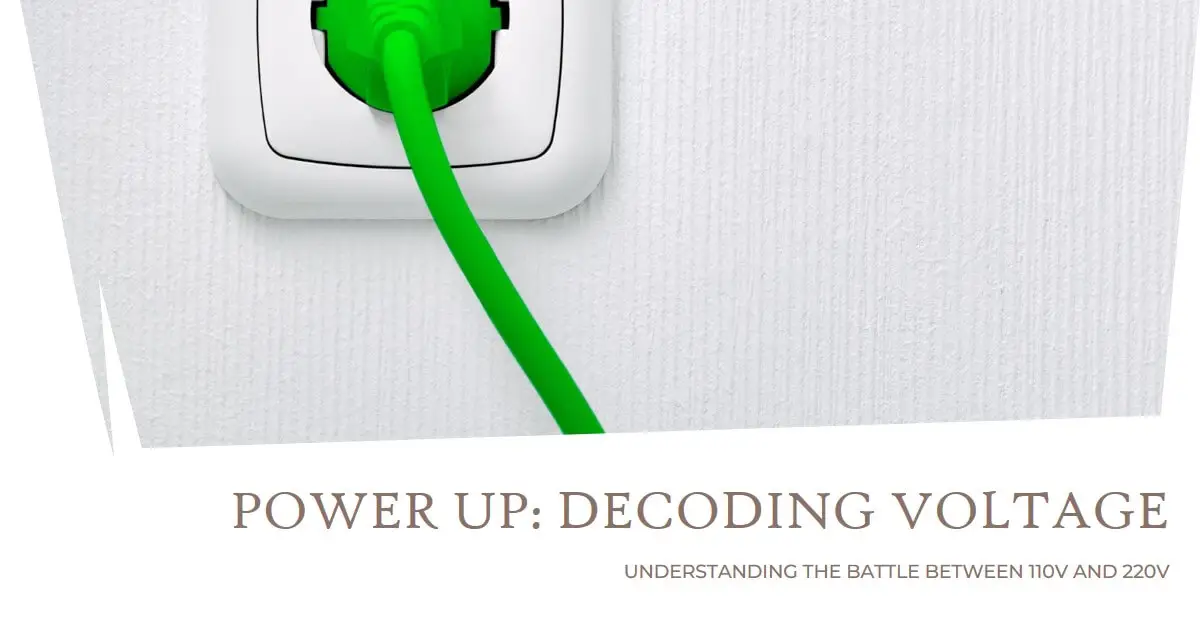Image: “Article Feature Image” by Bing, Source: [Bing Graphic Art].
AC voltage, or alternating current voltage, is the standard electrical power supplied to homes and businesses. Efficiency plays a crucial role in electrical systems, as it determines how effectively electricity is converted into useful work.
In this article, we will explore the efficiency of 110v and 220v AC systems, comparing their advantages, disadvantages, and overall performance.
Higher voltage levels, such as 220v AC systems, typically exhibit greater efficiency compared to lower voltage systems like 110v AC.
Understanding Voltage
Voltage is the measure of the electric potential difference between two points in a circuit. The primary difference between 110v and 220v AC systems lies in the magnitude of this potential difference.
While 110v AC delivers a lower voltage, 220v AC operates at a higher voltage level. The voltage level has implications for electrical efficiency, which we will delve into further.
Electrical Efficiency
Electrical efficiency refers to the ratio of useful output energy or work to the input energy or work supplied to an electrical system.
Various factors affect the overall efficiency of an AC system, including resistive losses, reactive losses, and voltage levels. Voltage, in particular, has a significant impact on the efficiency of electrical systems.
Read also my article: Unveiling the Truth: Does a 220V Outlet Use More Electricity than a 110V Outlet?
Comparing 110v and 220v AC Systems
Advantages and Disadvantages of 110v AC
- Advantages of 110v AC:
- Wide Availability: 110v AC systems are prevalent in the United States, making compatible appliances readily accessible.
- Safer for Personal Use: Lower voltages reduce the risk of electrical shock, making 110v AC systems safer for residential applications.
- Disadvantages of 110v AC:
- Increased Line Losses: Higher current is required to deliver the same power, leading to higher resistive losses during transmission and distribution.
- Limited Power Capacity: The lower voltage restricts the amount of power that can be efficiently transmitted, potentially resulting in voltage drops over longer distances.
Advantages and Disadvantages of 220v AC
- Advantages of 220v AC:
- Reduced Line Losses: Higher voltage enables lower current, resulting in reduced resistive losses during power transmission.
- Increased Power Capacity: The higher voltage allows for the transmission of greater power loads efficiently.
- Disadvantages of 220v AC:
- Limited Availability: 220v AC systems are less common in the United States, making compatible appliances less widespread.
- Increased Safety Risks: Higher voltages pose a greater risk of electrical shock, requiring appropriate safety measures and precautions.
Efficiency Comparison: 110v vs. 220v AC
The efficiency of 110v AC Systems
- Factors Affecting Efficiency in 110v AC Systems:
- Resistive Losses: Higher current levels in 110v AC systems result in increased resistive losses, reducing overall efficiency.
- Examples of Efficiency in 110v AC Systems:
- Residential Applications: Many household appliances and devices in the United States operate on 110v AC, providing efficient functionality for everyday needs.
The efficiency of 220v AC Systems
- Factors Affecting Efficiency in 220v AC Systems:
- Reduced Resistive Losses: Lower current levels in 220v AC systems result in decreased resistive losses, improving overall efficiency.
- Examples of Efficiency in 220v AC Systems:
- Industrial Applications: High-power machinery and equipment in industrial settings often operate on 220v AC, benefiting from improved efficiency and power transmission.
Other Considerations
While efficiency is an essential factor, several other considerations impact the choice between 110v and 220v AC systems.
- Safety Concerns with Higher Voltage Systems: Higher voltage levels in 220v AC systems present increased risks of electrical shock, requiring proper insulation and safety measures.
- Compatibility and Availability of Appliances: The availability and compatibility of appliances for a specific voltage level can significantly influence the choice of AC system.
- Regional Variations in Voltage Standards: Different regions worldwide may adopt different voltage standards, impacting the feasibility and practicality of using specific AC systems.
Conclusion
In conclusion, the efficiency of AC systems depends on various factors, including voltage levels. While 220v AC systems generally exhibit higher efficiency due to reduced resistive losses, the choice between 110v and 220v AC systems involves considering multiple aspects such as safety, availability of appliances, and regional standards. Ultimately, the decision should be based on specific requirements and considerations relevant to the intended application.


